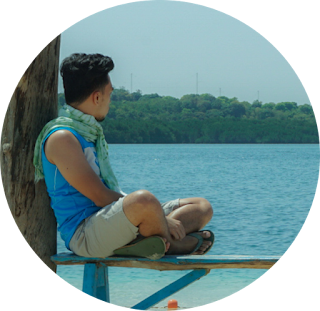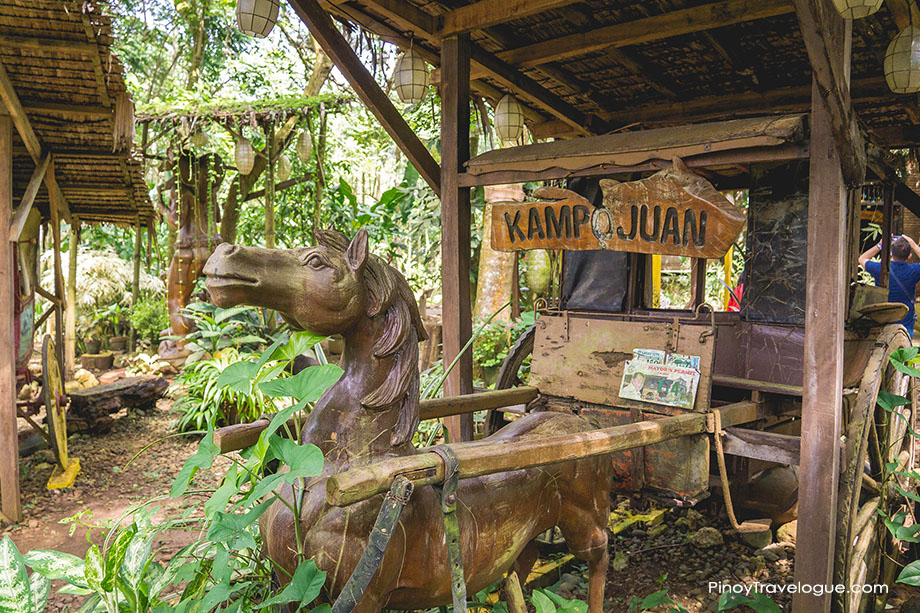 |
Our driver pulled over amid a forested property. I was a bit drowsy when I embarked the Hiace that transferred us from Dahilayan Forest Park to yet another adventure park called KampoJuan. Both sites are within Manolo Fortich town, so the drive took only less than an hour, breezing across hectares of Del Monte's pineapple orchard.
The scenery composed chiefly of contiguous pineapple plants arranged in symmetry upon the expansive landscape was so monotonous that it induces sleep while onboard. I was just about to doze off when we reached KampoJuan. Little did I know that what's within this eco adventure and eco heritage resort would be the caffeine to my languorous, history-enthused self.
KampoJuan
KampoJuan is owned by the Acostas, a well-known politcal family in Bukidnon. The adventure park was named after the family patriarch who started it all in 2011, the late Dr. Juan C. Acosta, a crop scientist and agriculturist who, in over 25 years of agronomic work, developed a very sweet pineapple variety called "Ulam" (visitors also learn about this breed when touring around KampoJuan).
Juan's son and our host, Neric Acosta, an academic, environmentalist, art collector, politician, and former government executive during the Aquino presidency, currently runs and curates the heritage resort. He usually tours KampoJuan visitors around, though we did not meet him until the later part of our tour.
 |
| KampoJuan's thick forest |
KampoJuan is an ecolodge, adventure park, and a cultural treasure trove. The 14-hectare property features a flat terrain where a wooden farmland and a mini pineapple plantation thrives, a deep gorge where thrill-inducing zip rides stretches over, and an ancestral house that is full to the brim with historical artifacts, hence functioning as a tourist lodging and a museum.
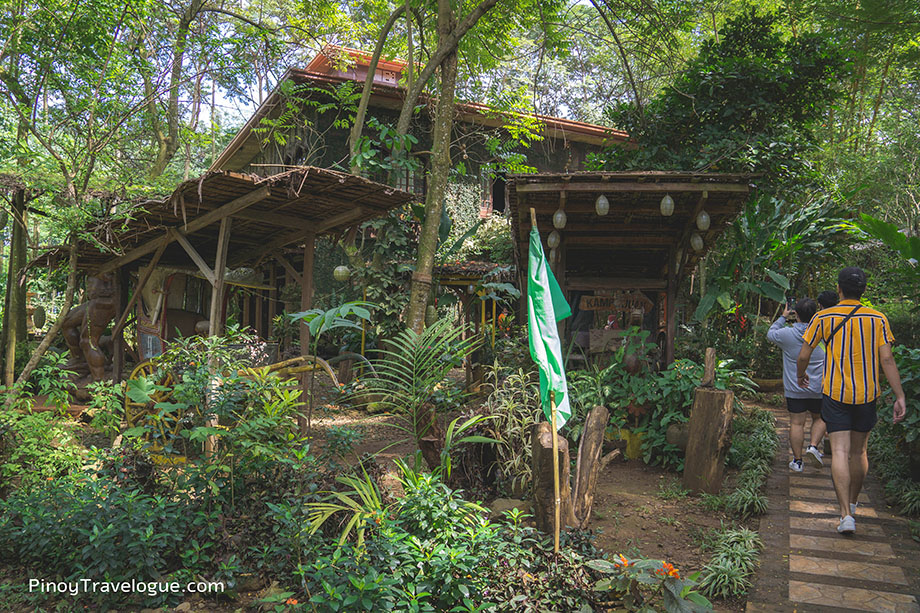 |
| KampoJuan's heritage house amid the lush foliage |
 |
| KampoJuan's heritage house |
An Eco Adventure Park and Resort
KampoJuan opened to the public in 2011 as an adventure park. It started with a hanging bridge and a quarter-kilometer zip line that connects both ends of the ravine. Soon after, the Acostas added "The Heritage House", a three-story mansion that stands surrounded by the eco park's thick verdure.
The 120-year-old house was already in deteriorating state when in 2014, Neric purchased it in Rosales, Pangasinan, dismantled it and brought it to Manolo Fortich piece by piece. The disassembled blocks of Philippine hardwood traveled about 2000 kilometers via cargo vans and sea vessels—from Pangasinan to Bicol, Bicol to Samar, Samar to Leyte, Leyte to Surigao, and finally from Surigao to Bukidnon. It took two years before the house was fully rebuilt within KampoJuan and became the first and only transported house in Mindanao. Since its completion in 2016, KampoJuan operated as a bed and breakfast offering a laid-back, countryside accommodation.
 |
| Entrance to the heritage house |
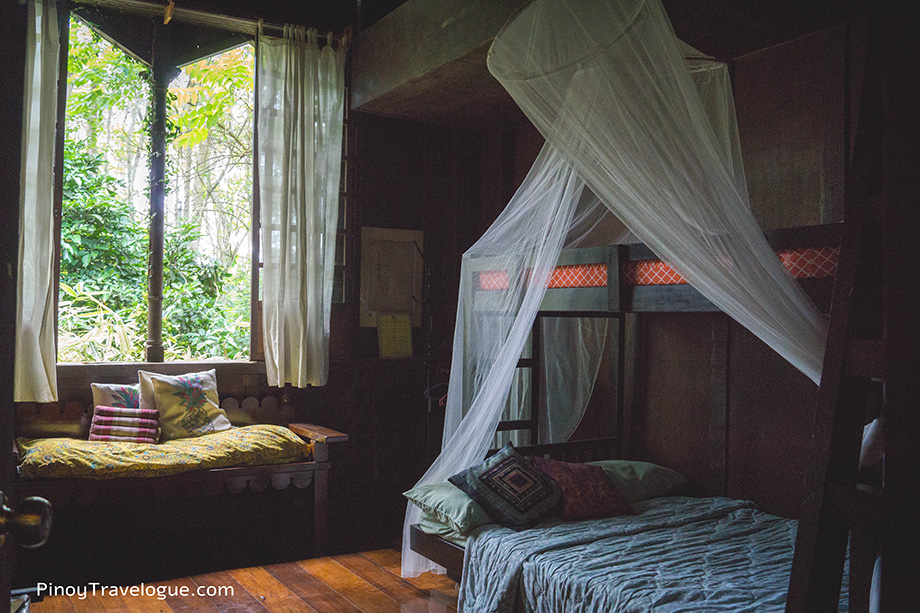 |
| One of KampoJuan's spacious rooms |
The mansion has seven rooms that each can accommodate up to eight persons. These rooms, named after the seven ethnic tribes of Bukidnon, blend in with the family's collection of antiquities displayed in every corner of the house, giving its guests a stay with a patina of the colonial times.
Apart from the century-old house, the eco-resort has two large swimming pools lined with mangima stones that are abundant in Bukidnon, a "green-design" lodge that can house up to 80 guests, and a bamboo and cogon-thatched pavilion with environment-friendly facilities such as rubber chairs made from old tires.
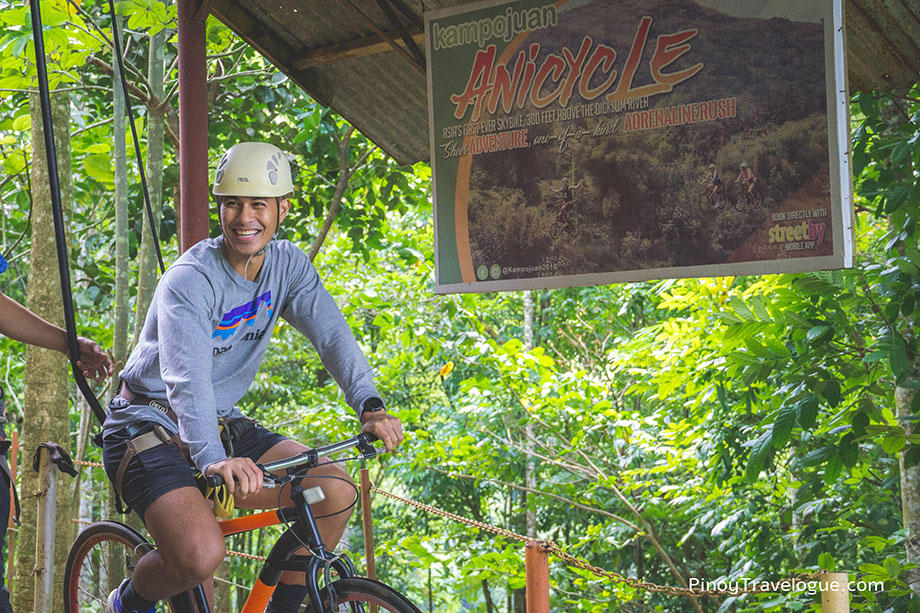 |
| Anicycle ride at KampoJuan |
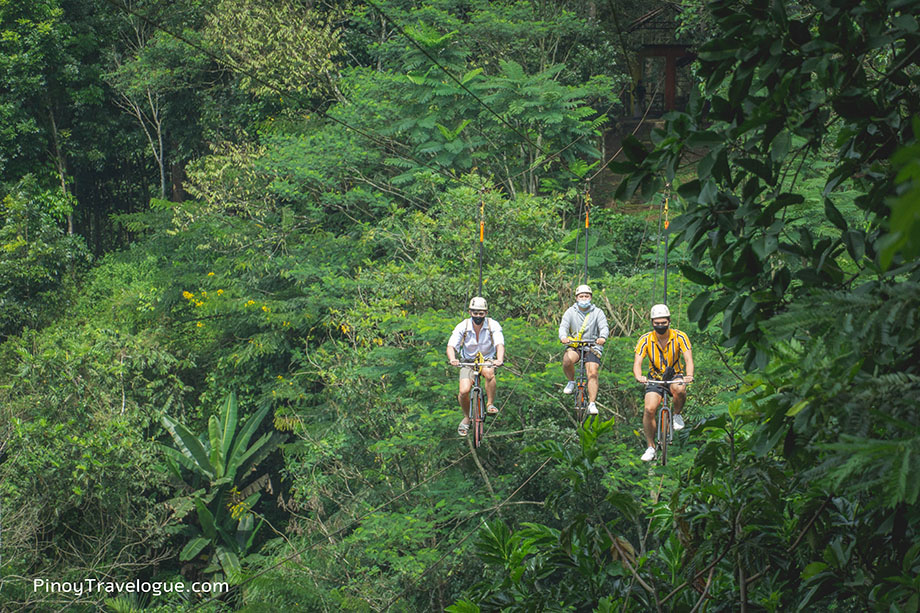 |
| Anicycle ride across a gorge |
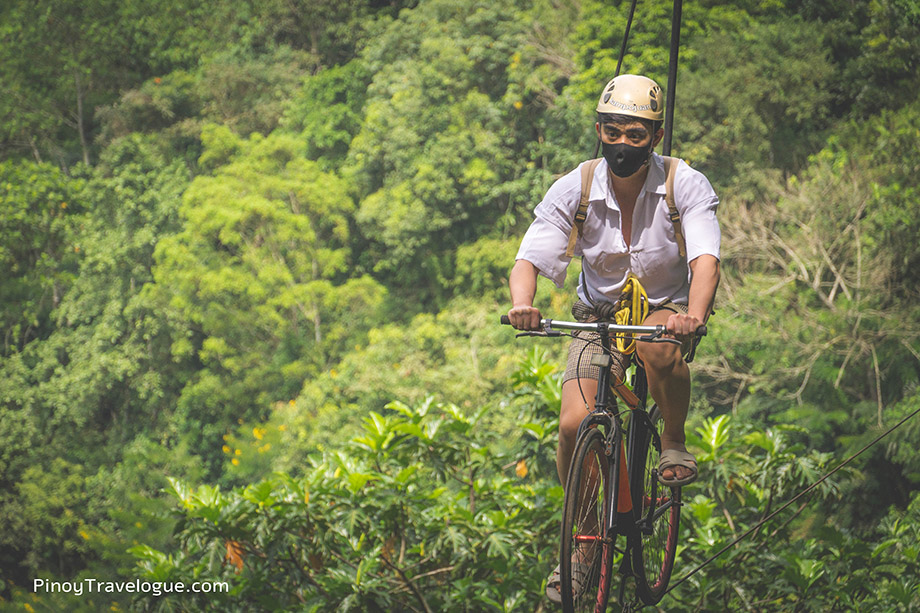 |
| Anicycling |
A few inches from the pavilion is the starting point of "Anicycle", KampoJuan's flagship ride. It is, as KampoJuan professes, Asia's first-ever sky bike. I enjoyed this zip ride, pedaling across the 300-meter cable suspended over the lush ravine where a river flows placidly. I managed to stop midway and take a photo of the dizzying gorge below.
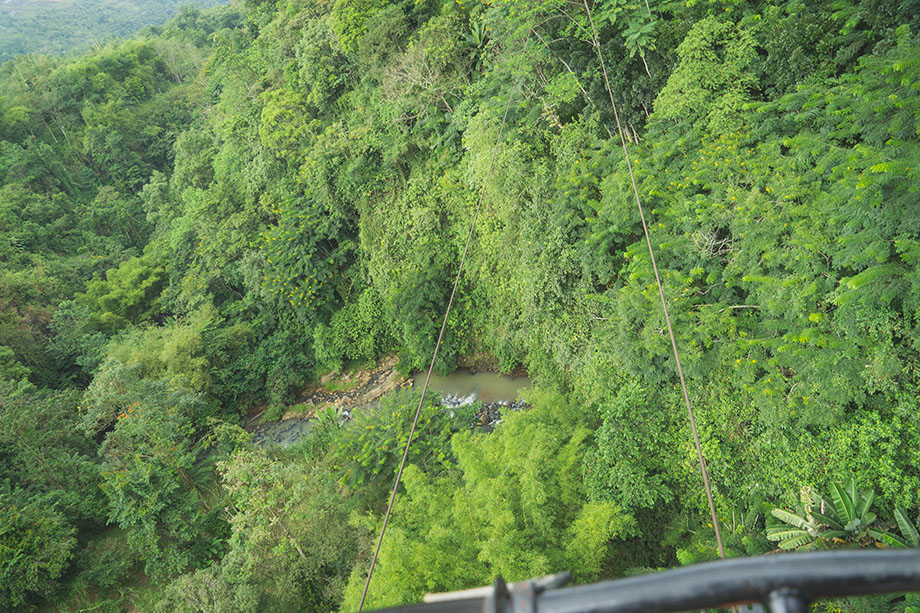 |
| Deep gorge below the skybike |
A Cultural Treasure Trove
KampoJuan's guided house tour is a trip down history with the Acosta family's 40-year collection of antiques and artworks. Marjun, the staff who toured us around, mentioned that the house keeps about a thousand pieces. The second floor is crammed with antiquarian books, heirloom furniture and silverwares, paintings and sculptures by Filipino masters, and numerous family memorabilia.
 |
| Numerous items displayed inside the heritage house |
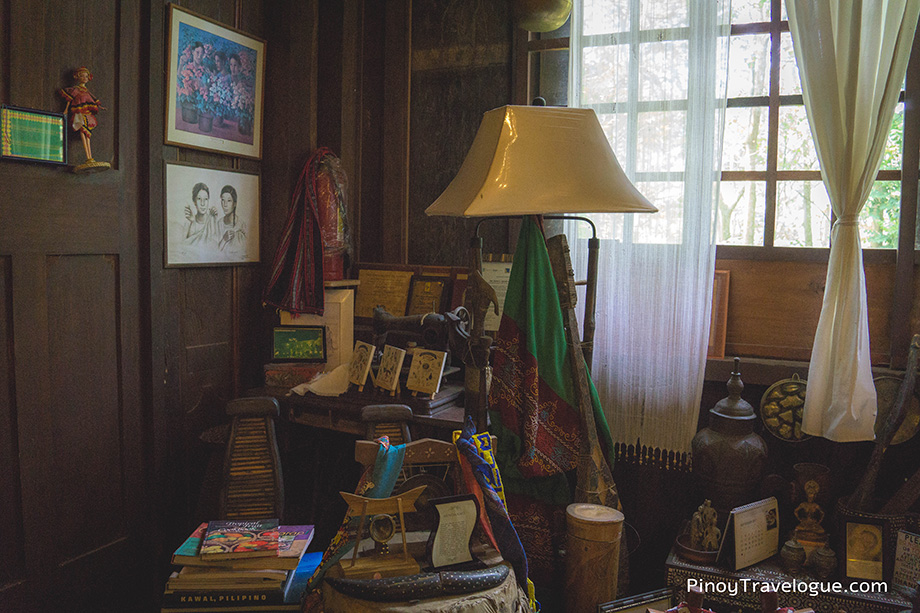 |
| Old items on one corner of the heritage house |
 |
| Ancestral silverwares |
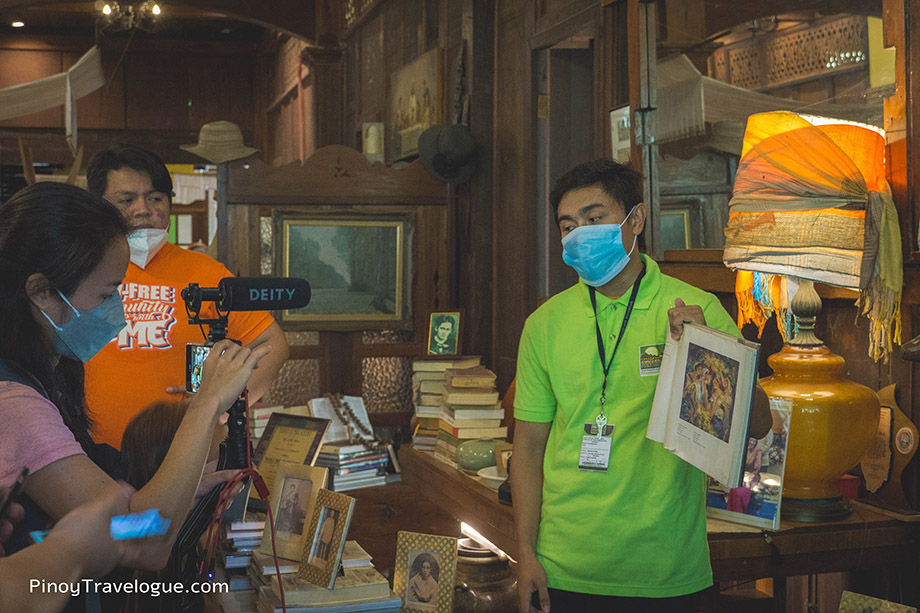 |
| Marjun telling us about Anita Magsaysay-Ho's painting Night Market |
Among this myriad of cultural treasures, there are seven remarkable items, the pièces de résistance, as Marjun enumerated:
(1) a 1960 crayon-based drawing of a Manobo princess by Fernando Amorsolo, the country's first National Artist;
(2) a chandelier made of gold, brass, and crystals brought from Spain through the Galleon Trade;
(3) a 1972 floral rosette woodcarving by Juan Flores, the Father of Pampanga sculpture;
(4) a stone-based artwork that is an unwieldy facsimile of Anita Magsaysay-Ho's painting Night market, commissioned by Magsaysay-Ho herself to the women of Negros Oriental Arts and Heritage (NOAH), made from Philippine gemstones only found in the waters that surround Negros island; the stones were pulverized and inlaid in a million-year-old petrified wood, polished after the intricate inlaying, and then glossed with lacquer;
 |
| Amorsolo's crayon-based drawing of a Manobo princess |
 |
| At the center of the house, the Spanish chandelier from the Galleon Trade |
(5) a wooden "betrothal chair" where, in the olden times, lovers sit during the traditional pamamanhikan and were given the parents' blessing to marry;
(6) an heirloom butaka or wooden birthing chair from Ilocos, owned by an Acosta ancestor;
(7) one of the two surviving copies—the National Museum keeps the other copy—of the first Tagalog translation of Noli Me Tangere by Pascual H. Poblete, commissioned and published by Jose Rizal's eldest sister Saturnina in 1909, of which we were asked to photograph without flash to avoid any damage to the book.
A Growing Collection
We finished braving KampoJuan's sky bike at lunch time, but before we even got to our table, Sir Neric gathered our group which comprised fellow travel bloggers, vloggers, writers, social media influencers, tour operators, and personnel of Tourism Promotions Board and DOT-Northern Mindanao office to show us, for the very first time, some newly-acquired artworks (still in layers upon layers of bubble wrap) that he brought home from Negros—the latest addition to KampoJuan's already vast collection.
 |
| Neric Acosta |
Those were three crushed-stone crafts from NOAH that were produced during the pandemic by the same women artisans who created the Magsaysay-Ho painting facsimile: (1) a Pinoy fiesta-inspired food tray with banana leaf background (made of Philippine jade) and attached coconut shell saucers (made of mother-of-pearl); (2) a facsimile of Vicente Manansala's painting Prayer Before Meals; and (3) a version of Amorsolo's The Making of the Philippine Flag inlaid on the top cover of a blue wooden chest.
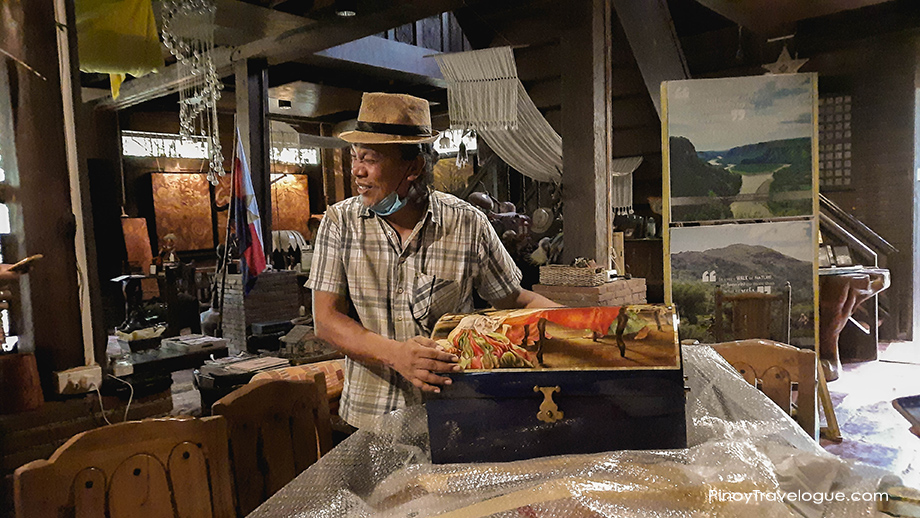 |
| Neric Acosta showing the Amorsolo-inspired stone artwork from Negros |
Sir Neric's showcase was 15 minutes of overwhelming information as he discussed every historical and cultural background that there was. Nonetheless, he supplied us additional knowledge and countless "wow" moments all throughout—an "appetizer", in his own words, to the delightful Filipino lunch that KampoJuan prepared for us.
A visit to KampoJuan is both an eco adventure and cultural heritage trip in one, because KampoJuan is where nature, heritage, and adventure intertwine.

